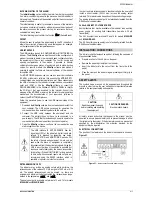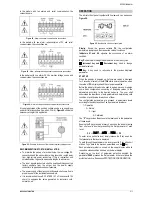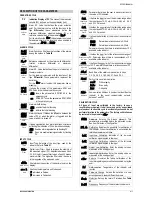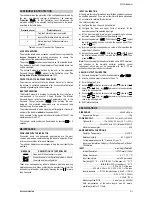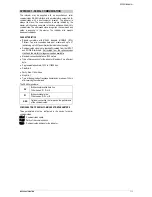
N1040i Indicator
NOVUS AUTOMATION
7/7
APPENDIX 1 - SERIAL COMMUNICATION
The indicator may be supplied with an asynchronous serial
communication RS-485 interface, with a master-slave connection for
communication with a host computer (master). The indicator is
always the slave. The communication is always initiated by the
master, which sends a command to the slave address with which to
communicate. The addressed slave recognizes the command and
sends a response to the master. The indicator also accepts
broadcast commands.
CHARACTERISTICS
Signals compatible with RS-485 standard. MODBUS (RTU)
Protocol. Two wire connection between 1 master and up to 31
(addressing up to 247 possible) instruments in bus topology.
Communication signals are electrically isolated from the INPUT
and POWER terminals. Not isolated from the retransmission
circuit and the auxiliary voltage source when available.
Maximum connection distance: 1000 meters.
Time of disconnection for the indicator: Maximum 2 ms after last
byte.
Programmable baud rate: 1200 to 115200 bps.
Data Bits: 8
Parity: Even, Odd or None
Stop bits: 1
Time at the beginning of response transmission: maximum 100 ms
after receiving the command.
The RS-485 signals are:
D0
Bi-directional inverted data line.
Other names: D/, D- or A
D1
Bi-directional data line.
Other names: D, D+ or B
GND
Optional connection that improves the performance
of the communication.
CONFIGURATION OF SERIAL COMMUNICATION PARAMETERS
Three parameters must be configured in the device for serial
communication:
bavd
: Communication speed.
Prty
: Parity of the communication.
addr
: Communication address for the indicator.


